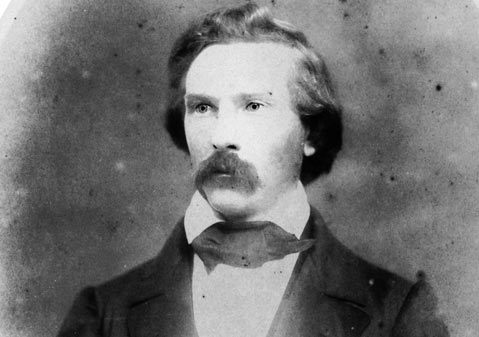What Is the History of the Badillo Affair?
Tensions Erupt Between Californios and the New American Arrivals

Santa Barbara’s transition from Mexican pueblo to American town during the 1850s was not always an easy one. As the American segment of the population grew, tensions increased between the new arrivals and the Californios, as the two sides grappled for political, economic, and social power. Some Americans viewed the Californians as ignorant and corrupt, while the latter at times resented the new arrivals as arrogant, intolerant usurpers. The language barrier exacerbated the situation, as did religious differences between Catholic and Protestant. These tensions built and then exploded into violence in 1859 when law and order virtually disintegrated.
On the morning of August 24, officials received word that Francisco Badillo and one of his teenaged sons had been found hanging from the branch of an oak tree in a grove near their home in the Carpinteria Valley. The coroner, mayor, and sheriff, with a party of around 20 riders, set out to investigate. Badillo previously had been accused of rustling cattle to feed his family.
Two of Badillo’s younger sons told the party that their father and brother had been taken from their home the previous night and accused John Nidever, three of his sons, and several accomplices of committing the lynching. Just then, one of the Nidever sons, George, was spotted riding nearby. Part of the party broke away, rode Nidever down, and came close to killing him.
The testimony of the two Badillo sons led to the arrest of John Nidever, one of his sons, and three accomplices. Charges were also brought against four men, all Californios, for the attack on George Nidever. In early September, a grand jury was impaneled to investigate the charges against both groups of men.
The grand jury consisted of eight Americans and eight Californios. The result, reported on September 14, was predictable; the jury split right down the middle on the convictions of the two groups and all parties were released from custody.
This, of course, satisfied no one. A few days later, John Nidever had an altercation with Badillo’s widow and one of her grown sons. The shouting match was quelled by a constable. Nidever also had a run-in, just outside of town, with one of the men accused of wounding his son George. Nidever chased him with a rifle and the man only escaped by leaping from a small cliff.
Emotions were now at a fever pitch. On September 25, a large group of Americans confronted one of the town’s leading Californios, former state senator Pablo de la Guerra. The Americans demanded that three of the men acquitted in the attack on George Nidever, along with Mrs. Badillo’s son, leave the county or the group would take matters into its own hands. For their safety and to head off the possibility of further violence, De la Guerra convinced the four to leave.
By this time, the area government was in a shambles. The offices of the mayor, District Attorney, and Sheriff were all vacant. For a time, the county’s Judge Charles Fernald and De la Guerra seemed to be the only voices of law and order. The situation was such that federal troops from Fort Tejon were called in to ensure peace.
The appearance of troops headed off further trouble, and gradually tensions subsided. In his report, the troop commander, James H. Carleton, criticized both sides. “Both classes seem to have lost sight of the fact that they are American citizens in common-having equal rights and bearing equal responsibilities.” He pointed out to both sides, “the necessity of forbearance and mutual concession as the surest means of adjusting all past differences and laying a foundation for future tranquility.” The immediate crisis would pass, yet the antagonisms would linger well into the next decade.



